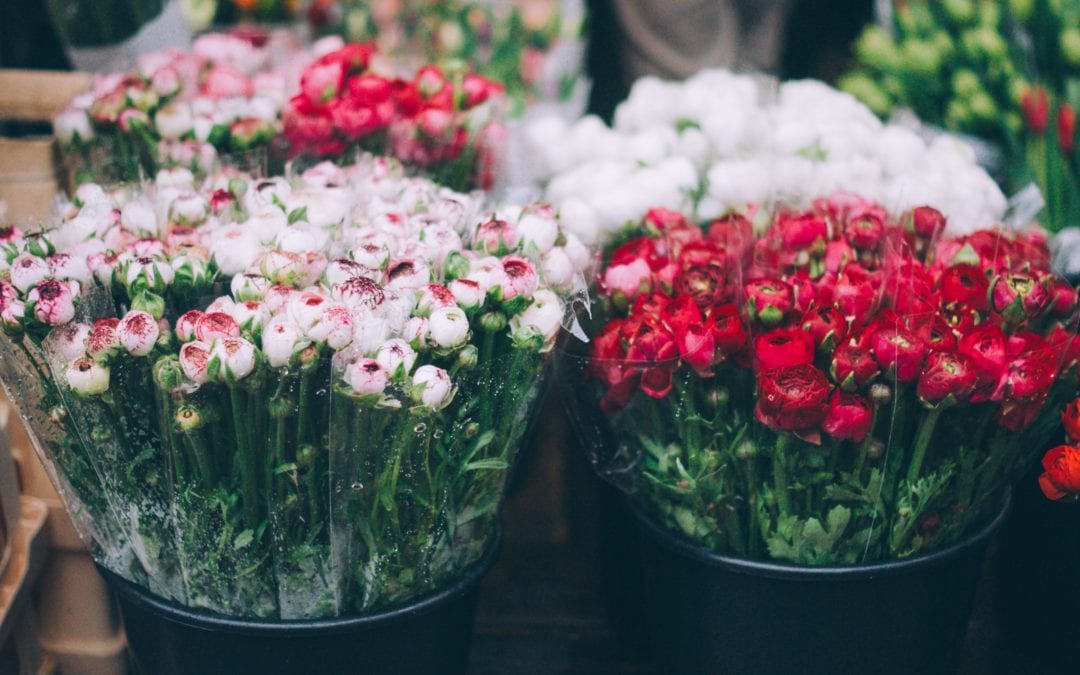Perishables is a business that comprises many moving parts, each link in the chain more important than the previous. Every step of the way, there are countless protocols and procedures in place that ensure the product is at its optimum quality when it hits stores, providing satisfaction for consumers. If flowers are mistreated or mishandled in any way during their journey from farm to store, their vase life will be jeopardized. The longer the vase life, the happier the customers.
So what do you think the most critical point of a flower’s journey is before getting to a consumer’s home? If you guessed the supermarket stores, you’re right.
If you make no investment in your floral department other than training, then you have spent your funds wisely. Training your floral personnel on proper care and handling as well as building a “best practices” culture is priceless. The importance of how flowers are handled once they reach the stores can’t be stressed enough. Oftentimes, floral gets put on the back burner, so to speak, and conditions for receiving, storing, processing and even displaying flowers might not be ideal. Having the knowledge to navigate these obstacles can make all the difference in the quality of the flowers that hit your sales floor and in your customers’ experience once they get the flowers home.
Seven tips for teaching your staff how to properly care for cut flowers at the floral department level.
Floral training should begin from day one, and there are some basics you should cover right away. Working with best practices as part of the daily routine is critical. You might be using the best care products available, but without following proper protocols, flowers will not perform at their best. The must-haves in the daily checklist include the following.
1. Receiving
Having a list of inspection points to cover when receiving product can save a lot of time and money down the line. Be sure your floral team has an eagle eye to spot common floral diseases as well as mechanical or physical damage to the flowers. Mechanical damage is something that may not appear right away, so it’s imperative to scrutinize boxes or bunches that appear crushed or damaged.
2. Clean and Sanitize
Bacteria is the No. 1 enemy of fresh cut flowers, and the best way to combat bacteria is to make cleaning and sanitation a top priority every day. The daily checklist should include cleaning and sanitizing all work areas, including tools, work surfaces and buckets, with a weekly cleaning of walls, doors, floors and coolers.
3. Hydrate
Ensure that flowers are hydrated properly, especially dry-pack flowers. When unpacking flowers, be sure items received wet pack have adequate water in the buckets, and if they don’t, add properly prepared and proportioned flower-food solution. For dry-pack flowers, cut and dip stems into hydration solution prior to putting them into buckets with flower-food solution. This step will ensure that flower stems are unclogged and free to drink.
4. Nourish
Cut flowers need to be nourished and fed. Flower-food solutions provide flowers with what they need to stay healthy and gorgeous. Dosing flower food properly, according to the manufacturer’s instructions, is extremely important. Too much, and flowers will “burn”; too little, and flowers won’t get enough of what they need. Learn how to prepare flower-food solutions so that it can do its job, and you’ll be repaid with product that lasts longer.
5. Protect
Using a finishing spray on flowers on display will help seal the deal, so to speak. A finishing spray gives cut flowers a bit of a refresh without having to be completely reprocessed.
6. On Display
Maintaining flowers once they’ve been processed and put out on the sales floor is vital to the success of your department. Customers are attracted to displays that are fresh and full. Check water levels in flower buckets daily, and consolidate buckets as product is sold. Knowing the flower varieties and their characteristics is important so that your team can quickly spot something that isn’t right and pull the product before a customer unknowingly buys it. Watch for condensation on sleeves and avoid getting drops of water on flower heads to prevent Botrytis (mold). Avoid temperature fluctuations such as extreme drafts, both hot and cold. Do not display cut flowers near ripening produce to lessen their exposure to ethylene.
7. Customer Care
Even if you’ve done everything right up to this point, once the flowers go home with the customers, it can all go horribly wrong. Never assume that customers know how to care for their flowers; for most people, buying flowers can be an intimidating experience, and they may be shy about asking questions. They may not even know the right questions to ask or that there are questions to ask. Talk to your customers about their flowers, what they should expect to happen and what they should do when they get home. Give them packets of flower food to use at home. Explain that care and handling steps should be followed and repeated every couple of days to get the longest vase life possible. Not only will they appreciate the advice, but they will be thrilled with their flower experience, as well. The next time they want to buy flowers, who will they come to? The experts, of course.
It is said that an ounce of prevention is worth a pound of cure. Never is that cliché better illustrated than when you are a purveyor of fresh, perishable products like flowers. Giving customers the absolute best means taking every precaution, from seed to shopping cart, to ensure that quality remains high. The supermarket is last point of contact before those flowers get into customers’ hands. Training your floral department personnel in care and handling best practices will ensure that customers will have positive experiences – and they will probably become repeat customers because of their experiences.







